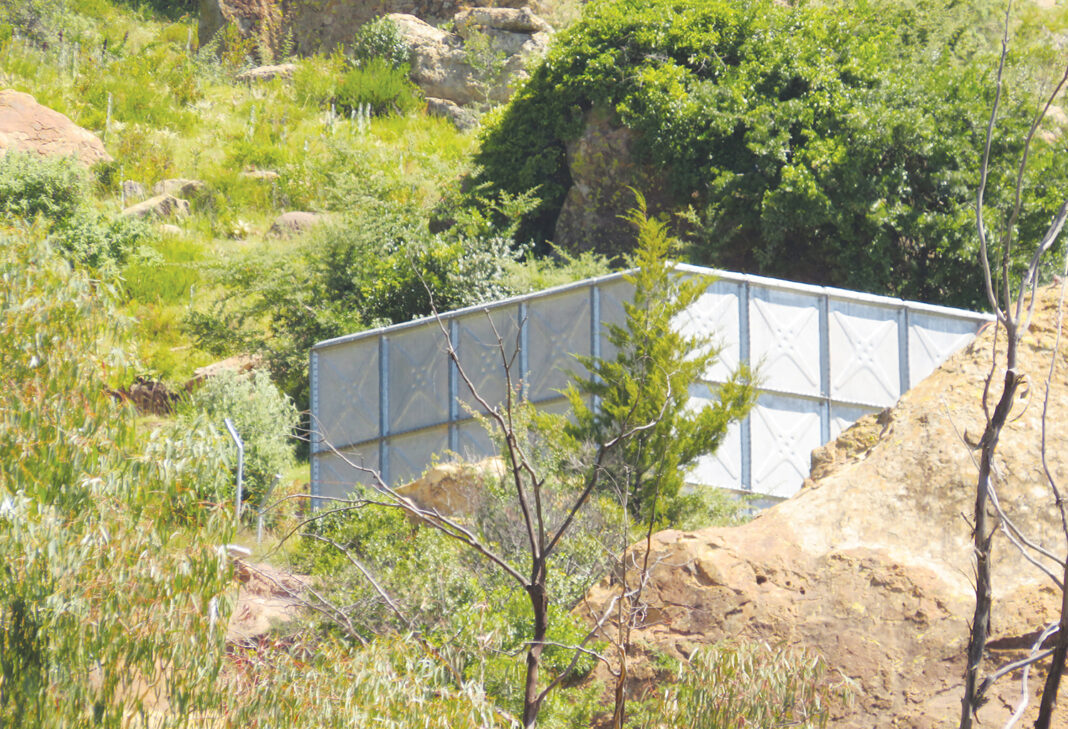By Majirata Latela
The unsuccessful Tsikoane Water Supply Project which was planned to supply water to Hlotse, Matukeng and Tsikoane — which cost the government M120million in 2008 – has cost the government another M45million after surveyors bungled the whole project.
This was disclosed by the minister of development planning, Selibe Mochoboroane, during his visit around the country to inspect the state of government projects in line with the mandate of his ministry which is the focal point for coordination, implementation of national policies and plans aimed at achieving both the national and international initiatives.
“The most challenging issue here is the poor management of state resources. My concern is that Lesotho already has a challenge of limited state resources yet, sadly, the little that we have we do not use appropriately. There is no reason for projects to fail; it is the responsibility of the concerned minister, principal secretary, director and chief accounting officer to make sure that a project eventually serves its intended purpose,
“If a project does not serve its purpose, then it means there was no one monitoring the it. This also shows that my ministry also did not perform its monitoring duties. The project never served its intended purpose of supplying water to the community; with all the expensive equipment and very much advanced technology that is used there, it all ended up as a white elephant
“We had to go back together with the ministry of water to source out funds to make sure that the project serves as it was planned. That is why I always say projects which are not followed up on, monitored and completed within the planned timeframes consume a lot of money” Mochoboroane said.
He also indicated that some of the projects including the Tsikoane Water Project have failed because no one was monitoring the project and this shows that from start, the project was not well implemented hence surveyors did not realise that it was not going to be successful.
The M120 million which was a fund from development partners went down the drain as not a single drop of water came out of that project. The boreholes which were constructed to supply Tsikoane with water failed and the project has since been abandoned; and currently the ministry of water has been given another M45million to pump clean water from Hlotse River to supply the Tsikoane communities.
The Water and Sewage Company’s acting projects manager, Lehlohonolo Ncheke, on the other hand indicated that the shortage of water supply at Hlotse and non-availability of water supply at Tsikoane and surrounding villages has been a long term project and the Hlotse, Tsikoane intake upgrade works project is there to solve those problems.
The project is meant to maintain the intake tower in the Hlotse River so that is goes back to produce clean water from 1.9milion litres per day to 2.5million litres per day, which was the initial supply of clean water by the tower from the river to Hlotse town. Also there will be construction of another machine in the river which will pump two million litres per day to increase the supply of clean water to 4.5million litres per day
The 3.5 million litres will supply water to Hlotse while the one million litres will supply Tsikoane.
Prime Minister Moeketsi Majoro, during the launch of the project, said the project will take six months to complete. He pleaded the minister of water to make sure that the project is completed by September 2021.
“The government has realised that it has been a long time since the Tsikoane community has been living without water, and it is the government’s obligation to make sure that people have clean water supply.
“Supply of clean water is an answer to goal 6 of the Millennium Development Challenge Goals. When I took office, I realised that there are government projects which are not delivering as planned, hence my instruction to the ministers to make sure that those government projects which are not delivering serve their intended purposes. The Tsikoane project is one of them,” Majoro stated.
He said the project was started in 2011 by the ministry of water, and people were excited to see the project complete. However, they never got to see it answer their need for water. The project involved installation of a big pipe which was meant to fetch water from Tšifa-li-Mali to Matukeng where it would be pumped to Linotšing tank, which is one million litres in volume.
“The plan now is that the one million litres of water that will be pumped to that tank will supply five smaller tanks which are (were part of the first project) located around the Tsikoane, Matukeng, Mahlabatheng and Leqhutsung villages so as to supply all other villages around Tsikoane Mountain.
“The project is meant to supply 18 000 people while another 50 people will get jobs during the six months of construction. I hope we don’t get another white elephant after the six months, like we did the first time. Now we are here to rectify the mistakes that were made by the surveyors, which cost us M120 million,” he mentioned.
He added that since the project did not work the first time, they believe that the tanks have rusted and the water pipes are also leaking, which means when the project finally gets running they will have to get another contractor to fix the problem. China Geo Construction Company is the contractor that will be working to rectify the mistake committed when the project started.
Analysts have since indicated that the cost of corruption in Lesotho is counted in billions o Maloti as funds that could have used in projects meant for the public are diverted to private causes and projects such as this one can, if well investigated, show that corruption has actually happened.
On the other hand, the cost of perceived corruption is that the country becomes a less attractive destination for international investors and foregoes billions of Maloti in foreign direct investment that would have been useful to help the country in attaining its developmental goals.
General perceptions of corruption will generally only begin to decrease if the private sector is allowed to flourish and become the dominant force in our economy.








